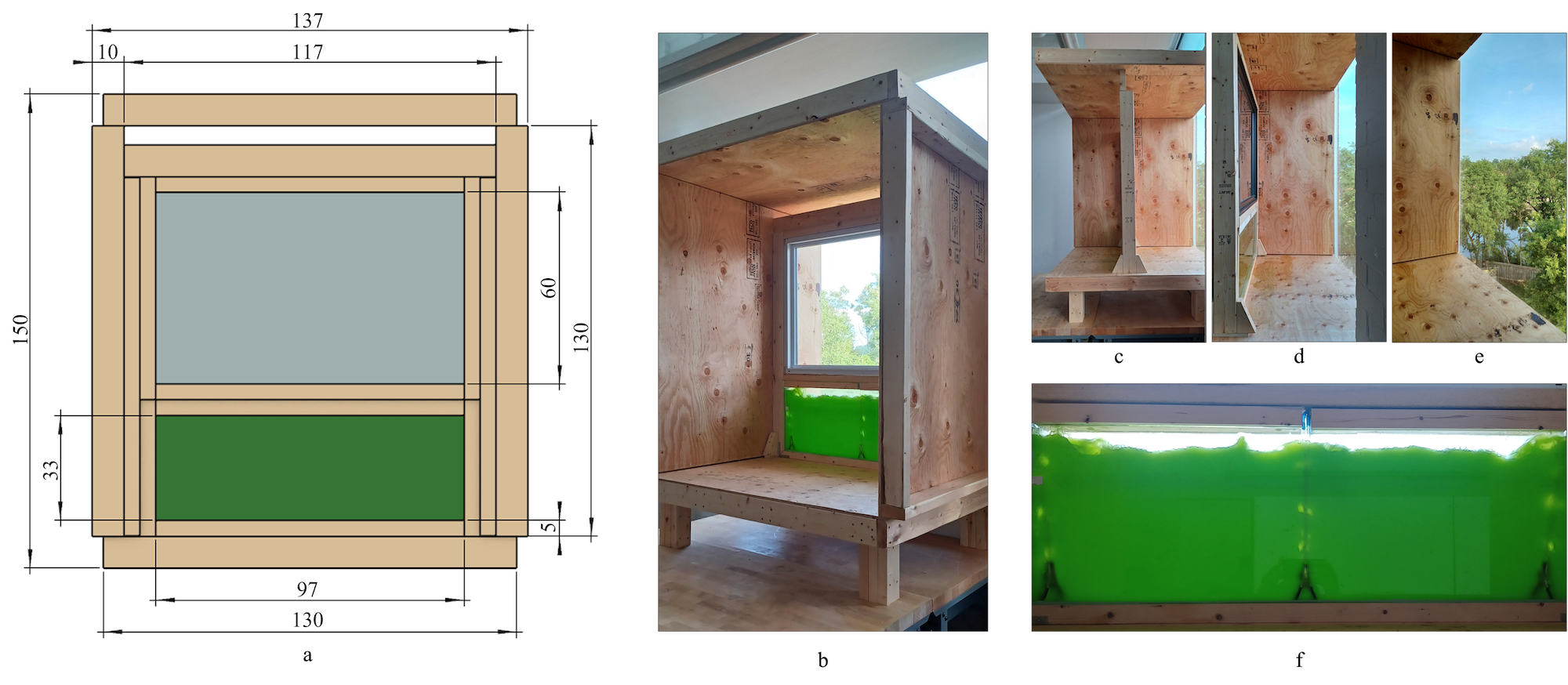To maximize the biomass harvest for DSFs integrating PBRs in cold climates
Energy & Environment
Natural Sciences and Engineering Research Council of Canada (NSERC)
Description
Microalgae photobioreactors integrated into double-skin façades in cold climates enhance growth conditions for biomass generation, CO2 fixation, and O2 production, while reducing thermal loads. However, shading imposed by double-skin façade’s assembly limits light interception for the photobioreactors. This project employs kinetics and shading models to estimate variations in biomass concentration within the light-constrained photobioreactor. To validate the accuracy and reliability of the model, the results were compared to experimental data collected by the authors from a full-scale constructed system. Biomass concentration was monitored using a developed RGB image-based monitoring technique. Direct search methods were employed to optimize the design and operational variables of the microalgae photobioreactors, with the goal of maximizing annual areal and volumetric productivities across 14 Canadian cities under various climatic conditions. Hooke-Jeeves algorithm was 65.6% faster than Powell’s conjugate direction method. This showed the system's adaptability by generating 1.3 – 3.0 kg/m2.year of biomass in different climates.







